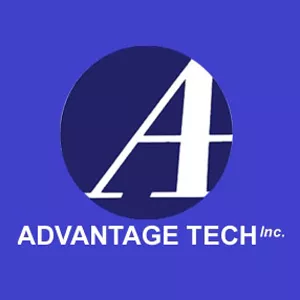Next Step: Looking Better on LinkedIn. It’s NOT “A Bridge Too Far”
By Mark Ruthenberg, with Samuel L Travis
LinkedIn is no longer the Holy Grail for those unemployed and looking for work. It has quickly transformed into a way of sizing up people at the office, evaluating clients and suppliers in the professional services field (and even competitors). Because of that, a sub-standard LinkedIn Profile can be both a career and a professional detriment.
Even if you are feeling quite safe in your current employment, it may be worth investing some time and effort to ensure your Profile is up to current Best Practices. A good profile could also land you a promotion when your HR department might be using LinkedIn to see who, outside your organization, has certain skills and experience! And it may be worthwhile for your employer to contribute to ensuring their professional staff keep their LinkedIn Profiles up to their own standards.
These tasks, while extensive and detailed, do not take superhuman skills to complete. They ensure that your LinkedIn Profile is treated with the respect your lifetime of experience deserves. Give yourself 2-3 hours for these tasks.
This should be/become an annual exercise to revisit the way your jobs (Experience) are presented, to reflect new experiences, accomplishments, and new industry perspectives. Login and check up on your Skills list monthly, just to keep the list focused (and to see who is looking at your profile).
Update all your contact info, and set a LinkedIn “shortname”
If your LinkedIn contact URL looks like https://LinkedIn.cim/in/your.name.123456 then shorten it to something less random. Mine is a short and succinct https://linkedin.com/in/markruthenberg If somebody else claimed your name on Linked, add a logical modifier, like https://linkedin.com/in/markruthenbergYYC, for a person in Calgary.
When job hunting, print your LinkedIn URL on business cards to hand out at networking events.
Write a good Summary: WIFM?
Don’t just regurgitate your life story in your Summary. Find a way to highlight your key skills. Help those recruiting you realize that you are the right person for THEIR SPECIFIC OPPORTUNITY. The person reading your profile has to see What’s In It For Me (“WIFM”) and clearly understand your potential contribution and benefits to them.
Don’t write it in the third person(“He did…” or “John did…“). It’s your Profile Summary after all…. write it either in the first person (“I did….“) or implied first person (as in “Did this… accomplished that…“). Use a tone that is professional, and matter-of-fact, but does not sound like bragging.
Have friends and family review it harshly & with skepticism… if THEY won’t believe it, then don’t expect a company or their recruiter too. But sometimes it may sound too good to be true, but actually be true. Nelson Mandela spent 27 years as a political prisoner, and when freed he rose to be the democratically elected President of South Africa and recipient of the Nobel Peace Prize. Not bad for a former “criminal”.
Make each Job strengthen your Profile
a. The right company, with a logo (if they’re still in business)
If the company is still in business, they should have a company page (if they are serious about online marketing, by now they should!) When you delete the company name and re-type it, their logo should be added to your profile. Their name may have changed since you worked there, or since you first wrote your LinkedIn Profile, so check-out the business name options LinkedIn suggests.
If the company is small, add a short one-sentence business description to your description for that position, so others have increased confidence in that position, and its importance & scope.
BONUS: If the company is large and has other LinkedIn members you can track them down as “corporate alumni” to further expand your network of people you know.
b. A good position description, should not focus on tasks but accomplishments.
Talk about what you did, and be sure to quantify your accomplishments. Not “increased sales” but “increased sales in my territory by 100%… company wide-revenues by 20%“. Not “managed subordinates” but “managed teams of 3 to 10 people in sales and business development activities“
c. Write it to stand out from others in same or similar positions: what made you special?
If you worked for a company where there are lots of employees or ex-employees, you may need to identify a way to stand out. Find something you did or contributed that is different form the norm, or changed the company in some way (or just made you memorable to the boss).
d. Use keywords AND acronyms
Use both, like “Search Engine Optimization (SEO)” because recruiters and headhunters may filter or search for either. Don’t limit your opportunities!
List both on your profile, so those doing a digital search for one or the other in their requirements can FIND YOU, and also so those less technical (like HR people, or departmental managers) will understand the experience you are trying to convey. Don’t assume an acronym is obvious. “SEO” has 30 different meanings .Who knew?
Don’t have job gaps unless you have a good explanation (or its covered in your volunteer or education section
This is common when converting text resume where early experience is just lumped together, as in “after graduating from University, worked for a number of law firms in ever-more-senior positions”, without details of years or companies. LinkedIn despises generalities, and non-specifics.
Now is the time to either treat this as “one job”, or to detail the different employers. You might choose to show or hide the months. if the companies in this grouping are all out of business, some liberties might be taken. But aim for the “spirit of correctness”
Check your Skills (“attaboys”)… add or deduct as appropriate
a. Look at those of people in similar job titles: what are they featuring
I always tell job hunters to look at ten experienced people in their field or job title and see what Skills they are promoting. Chances are, recruiters are looking for these specific skills, too.
b. Add those that match your actual experience
Rank the Skills you find by importance/popularity, and then make sure you include the highest ranking ones that match your actual experience.
c. Delete skills that are not relevant, just plain wrong, or not part of your “branding”
Just because Skills are “popular” does not mean you have that background… don’t oversell yourself. LinkedIn fraud is now as common a reason for getting fired as resume fraud or degree fraud. Better to “under promise and over-deliver”
Get rid of any Skills that are “trivial” If you are in management Microsoft Office skills are not typically worth toting (they are assumed/required to a certain level, but not an advantage.). I once got rid of 60 “attaboys” for Blogging, which is not what I really DO, even though it might be a component task”
If you have more than 20 or 30 Skills listed, pare that down! They should focus on your strengths, not just list everything you are capable of doing.
d. Ask your friends to click support for your Skills
But, don’t send a LI message. Make a phone call, or send a regular email. Take the opportunity to re-connect & say ‘hi’)
Skills with nobody acknowledging them, look weak. Check with people you know, have worked with, or worked for, who are on LinkedIn to give you that “attaboy”. They may need to connect with you first, but doing this while on the phone with them is fast & efficient.
e. Re-sequence your Skills by dragging & dropping them into the most appropriate order
By default, they are in descending order, but that may not effectively communicate your “branding”. Also, by putting certain Skills first, you may encourage friends and colleagues to select them for recognition
While these tasks are well within every professional’s skill level, and your level of tech-savvyness, we can provide a bit of an “assist” and an outside perspective on what you are writing or saying. See Executive Resume Review.
Advantage Tech Inc has been providing Career Transition counselling since 1980, and was the first company in Calgary to specialize in this service. We’ve helped hundreds of companies and thousands of individuals over the years.
Next step: “Juicing Your Job Search”
This article will be the third of three in this series. See first in the series: Is Your LinkedIn Profile Up To Snuff??
While you are waiting for that, check out




